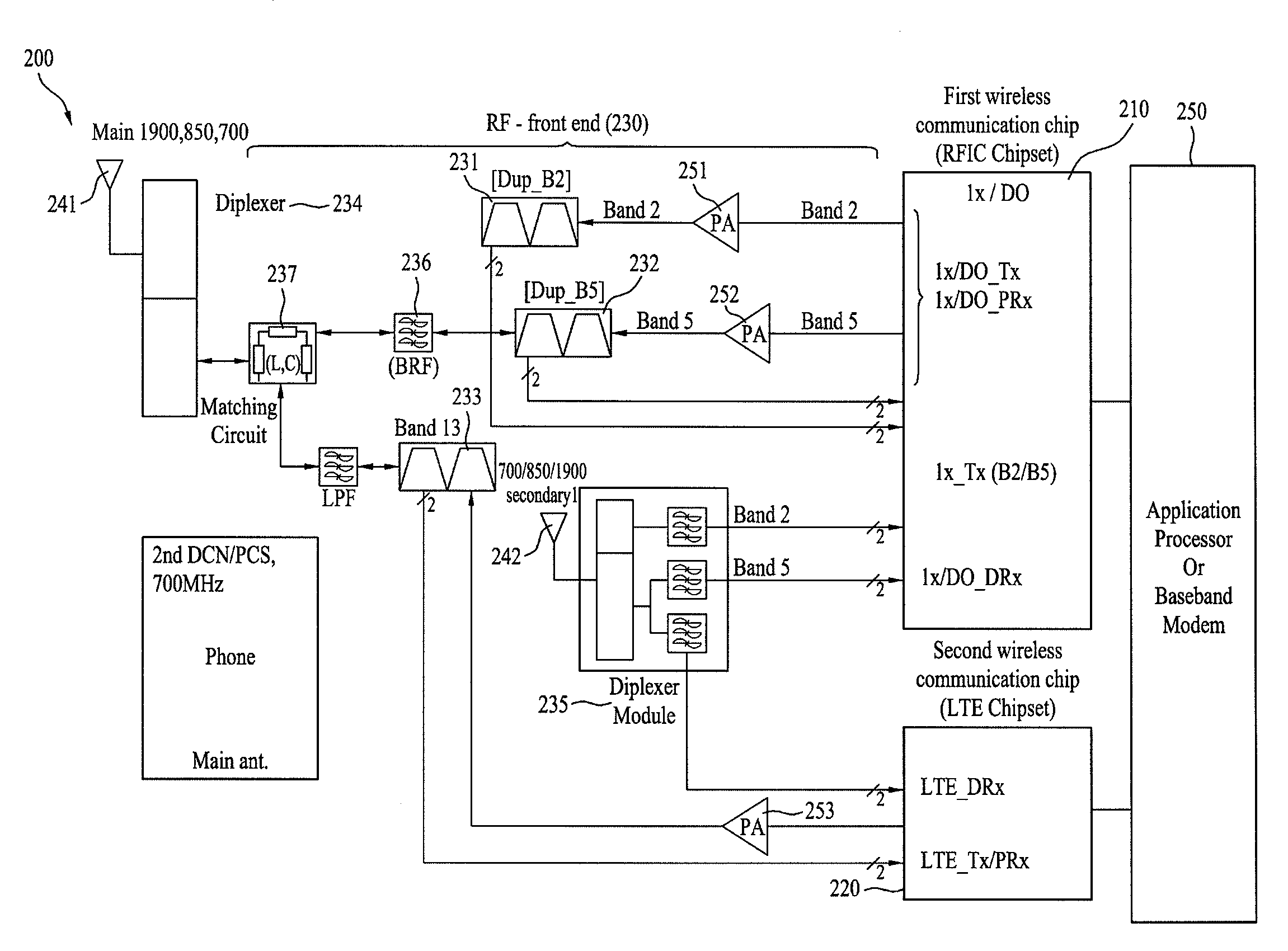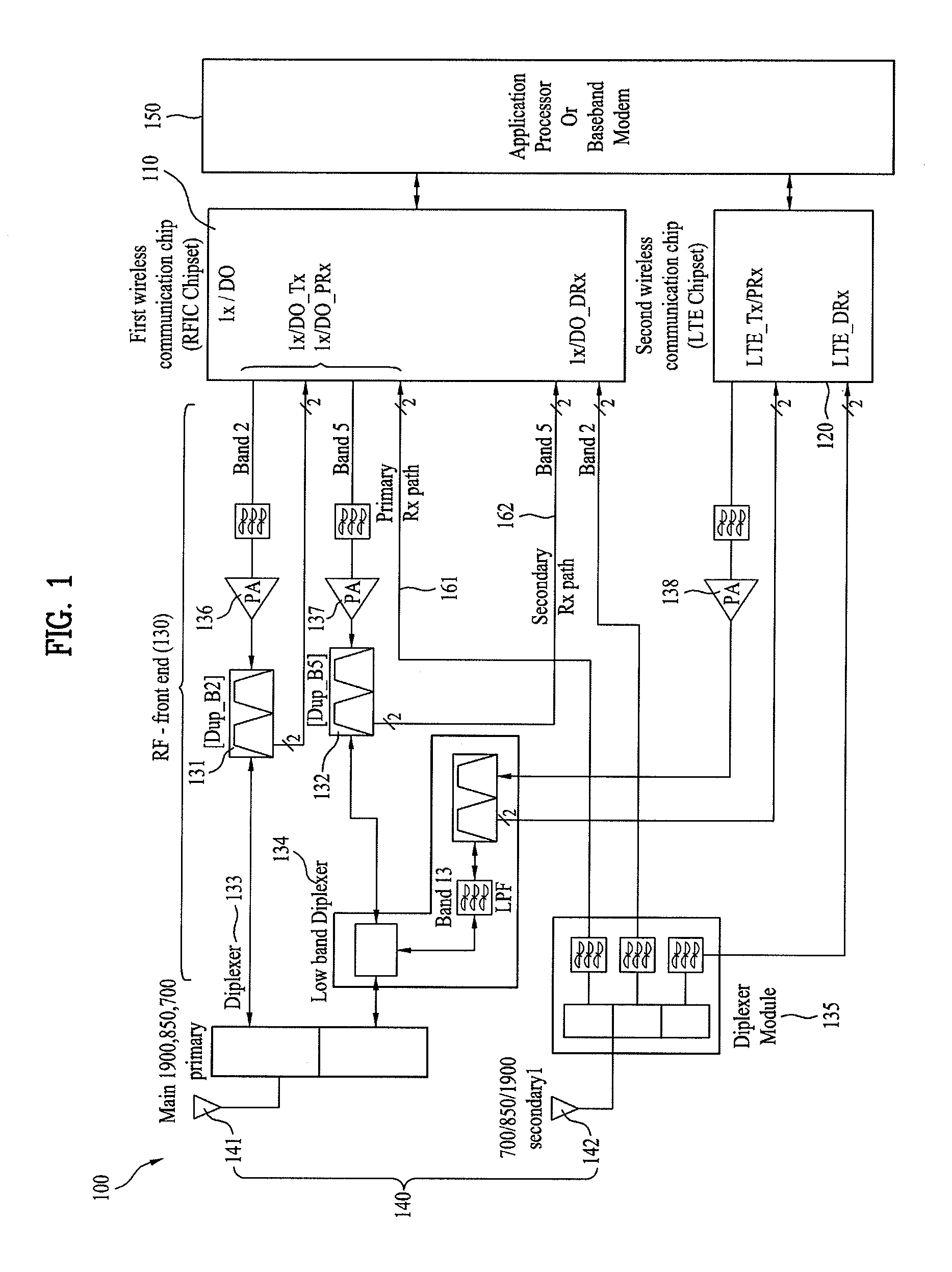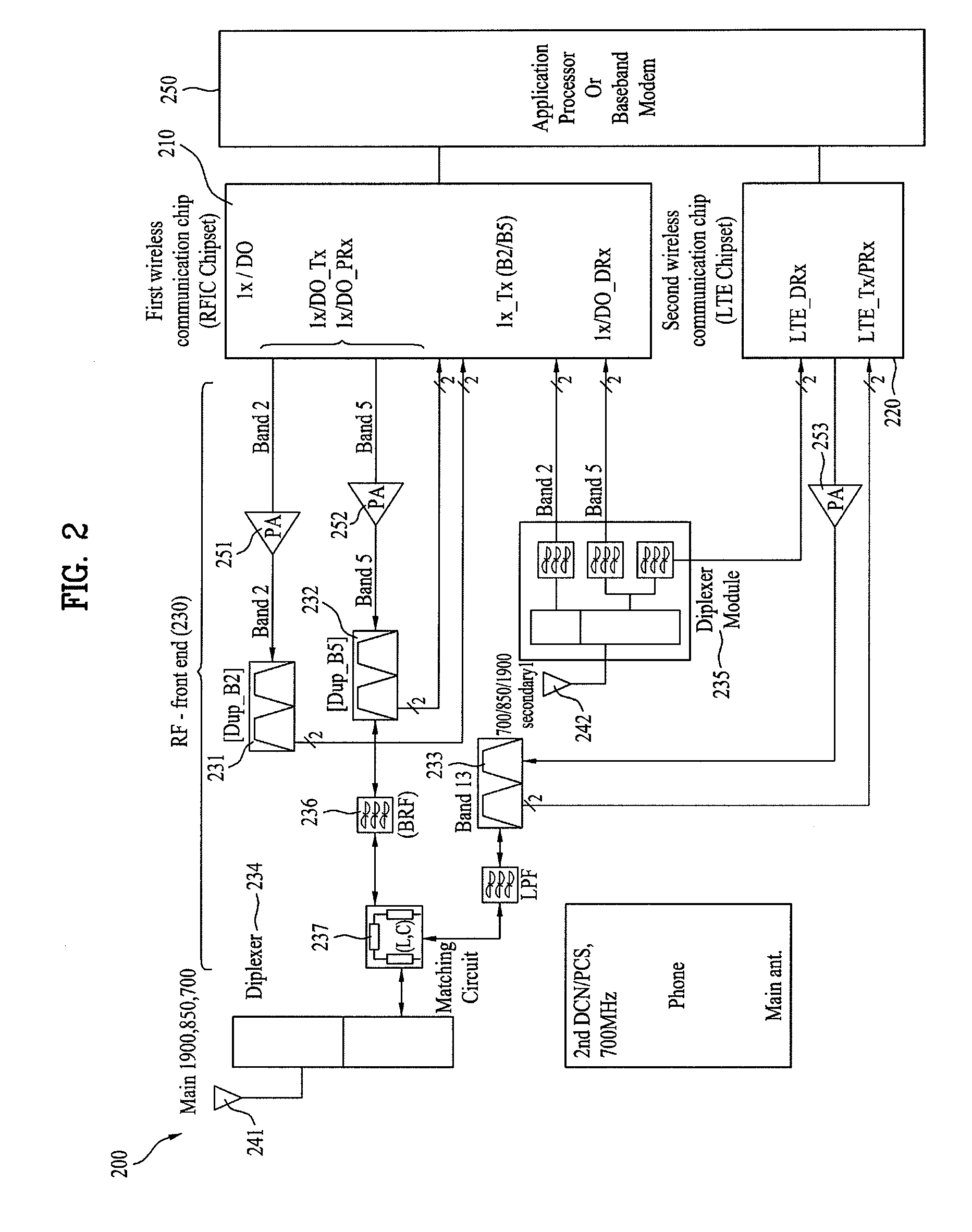User equipment for simultaneously transmitting signals to which different wireless communication systems are applied through a plurality of frequency bands
- Summary
- Abstract
- Description
- Claims
- Application Information
AI Technical Summary
Benefits of technology
Problems solved by technology
Method used
Image
Examples
first embodiment
[0035]FIG. 1 is a diagram illustrating an example of a configuration of a user equipment 100 according to the first embodiment of the present invention. As shown in FIG. 1, the user equipment 100 includes a first wireless communication chip 110, a second wireless communication chip 120, an RF front-end module 130, an antenna 140, and an application processor or baseband modem 150.
[0036]In the embodiment in FIG. 1, the RF front-end module 130 includes duplexers 131 and 132, diplexers 133, 134 and 135, and power amplifiers 136, 137 and 138. The antenna 140 also includes a primary antenna 141 and one or more secondary antennas 142.
[0037]Further, a radio wave of a specific frequency band is used for wireless communication. The first and second wireless communication chips 110 and 120 modulate original signals (baseband signals) to high frequency band signals during signal transmission, and demodulate the received high frequency band signals to the baseband signals during signal receptio...
second embodiment
[0062]The second embodiment according to the present invention discloses a method of inserting a filter having high IP3 to a front end of a duplexer of an RF path to prevent IM3 from affecting a received signal, in which the IM3 occurs at an RF end due to inter modulation. In this instance, IM3 can be prevented from affecting a received signal by rejecting a transmitting signal, which directly affects IM3 occurring in a receiving path, to reach a specific level (i.e., level that does not affect the receiver) or less.
[0063]In particular, FIG. 2 is a diagram illustrating an example of a configuration of a user equipment 200 according to the second embodiment of the present invention. As shown in FIG. 2, the user equipment 200 includes a first wireless communication chip 210, a second wireless communication chip 220, an RF front-end module 230, a primary antenna 241, a secondary antenna 242, and an application processor or baseband modem 250.
[0064]The RF front-end module 230 also inclu...
PUM
 Login to View More
Login to View More Abstract
Description
Claims
Application Information
 Login to View More
Login to View More - R&D
- Intellectual Property
- Life Sciences
- Materials
- Tech Scout
- Unparalleled Data Quality
- Higher Quality Content
- 60% Fewer Hallucinations
Browse by: Latest US Patents, China's latest patents, Technical Efficacy Thesaurus, Application Domain, Technology Topic, Popular Technical Reports.
© 2025 PatSnap. All rights reserved.Legal|Privacy policy|Modern Slavery Act Transparency Statement|Sitemap|About US| Contact US: help@patsnap.com



